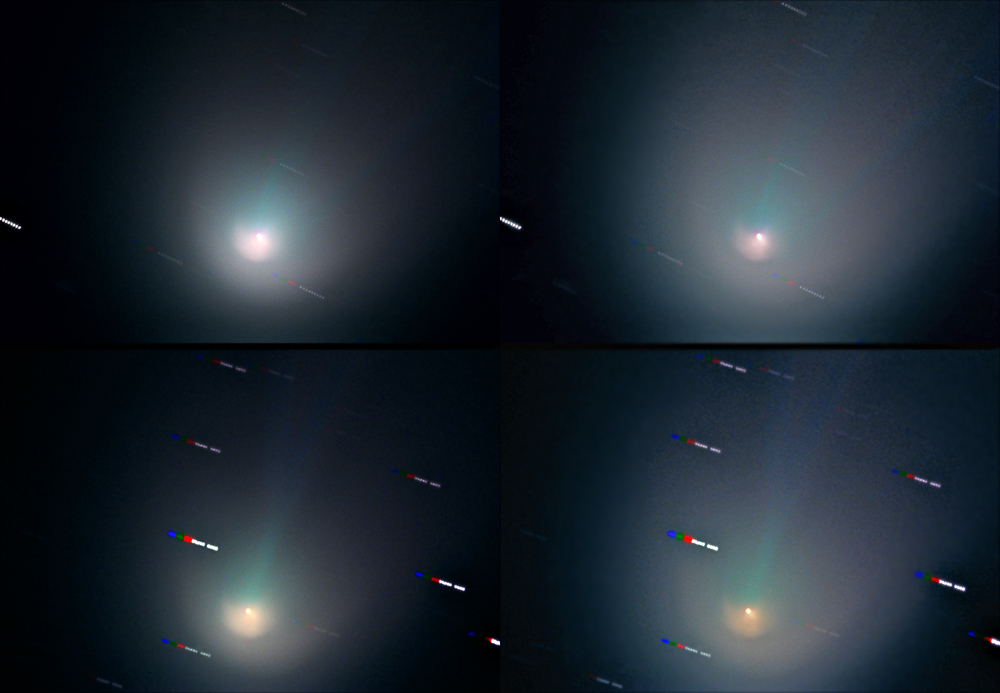
[back] Comet C/2001 Q4 NEAT

|
(c) 2006 All astro photo images are copyrighted. They may not be used or reproduced without explicit written permission from the authors. |
|
2' |
|
About this Image / Über dieses Bild
| CCD: | ST10 XME |
| Image Type, Orientation: | LRGB Composite, North is right |
| Exposure time: | L: 10x5 sec. for May 14th, 9x5 sec. for May 15th, 1x1 bin . R,G,B: 5x5 sec. for both days, 2x2 bin |
| Exposure date: |
upper row: May 14th, 2004, starting at 17:45UT lower row: May 15th, 2004, starting at 17:40UT |
| Location: |
Capella Observatory at Amani Lodge, Kupferberg near Windhoek, Namibia |
| Filter: | FR03 + Astronomik Typ II LRGB filters |
| Instrument: | Ganymed 60cm-Hypergraph in secondary focus, f=4800 mm |
| Image seeing (FWHM): | 1.9"..2.6" |
| Photographer: | Rainer Sparenberg, Stefan Binnewies, Volker Robering |
| Remarks: |
The images right are identical to the images left except one: They were edited to show the hull structure more easily.
The most inner
area around the comet's nucleus (severeal arcminutes, the core itself is too
small to be visible) are dominated by three bowshocks, which decreased over
the days from May 14th to 15th. Significant are the rays of the plasma tail,
which are pointing up (opposite direction to the sun and
appr. 90 degrees off the comet's moving direction). In the images
a very weak jet is noticable into direction 5:00h. The striking number of
stars in the second row of image results from the close encounter to the open
cluster M44. |
|
|
|
| Bemerkungen: |
Die Bilder rechts sind identisch mit denen links bis auf eine Ausnahme: sie wurden so bearbeitet, dass man die Hüllenstruktur besser erkennt. Die inneren paar Bogenminuten um
den Kometenkern (der Kern selbst ist zu klein, als dass er sichtbar wäre)
sind geprägt von drei Staubschalen, deren Konturen vom 14. bis
zum 15.Mai abnehmen. Auffällig außerdem die Strahlen des Plasmaschweifs, die
entgegen der Sonnenrichtung (und etwa 90° zur Kometenbewegung) nach oben gerichtet sind. Bei genauem Hinsehen ist auch noch ganz kernnah in den
ersten beiden Bildern der Ansatz eines Jets in Richtung 5:00 zu erkennen.
Die auffällige Sternendichte der unteren Bilder hat ihre Ursache in der zu
diesem Datum nahen Passage des Kometen an dem offenen Sternhaufen M44. |
Back to the Comet Overview / Zurück zur Kometen-Übersichtsseite